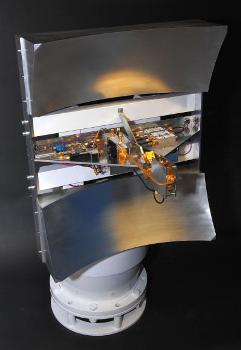The Concorde Crash, which happened over a decade ago still remains fresh in the minds of many people with the unforgettable images shown on TV of the supersonic jet with flames pouring out from its tail.
 The radar sensor can detect objects just centimeters across on runways. Credit: Fraunhofer FHR
The radar sensor can detect objects just centimeters across on runways. Credit: Fraunhofer FHR
The cause of the accident was a piece of metal lying on the runway during the take-off. When the aircraft’s tire rolled over the metal it burst and hurled chunks of rubber into the sky, which fell into the fuel tank, causing it to explode, thereby causing the death of 113 people. For prevention of such kinds of accidents, airport staff at six hour intervals keep driving up and down the runways, hunting for pieces of debris. However, monitoring such vast areas without technical assistance is not only time-consuming but also rife with errors particularly in bad weather such as fog. Moreover, the time intervals between the checks were also too protracted.
Research scientists working at the Fraunhofer Institutes for Radar Techniques FHR along with the Wilhelm Winter GmbH, PMD Technologies and the University of Siegen are developing a new weatherproof safety system, called LaotSe, which will monitor runways constantly and endlessly. According to Dr. Helmut Essen, this technology would have helped to prevent such tragedies as the Concorde Crash. All along the runway, devices have been installed, which would scan the surface continuously and detect even small items such as screws. However, the system would issue an alert only if the object would remain on the runway for some time. A bird or a plastic bag resting for a short time on the runway would not trigger the alarm.
The system includes a networked radar sensor, optical two and three-dimensional cameras along with an infrared camera. Dr. Wolfgang Koch, who is the head of the department at the FKIE, has revealed that this solution will be used as an assistance system but the final assessment and decision will rest on the airport staff. The sensor device will be tested initially at the Cologne-Bonn airport this fall and then further testing will also be carried out with the help of many demonstrator systems.